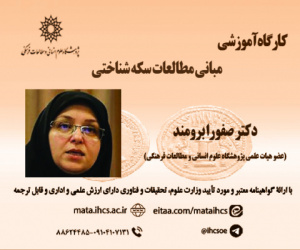نحوۀ بازنمایی ذهنی از خود و دیگری در مبتلایان به مولتیپل اسکلروزیس: نقش بافتار فرهنگی- اجتماعی (مقاله علمی وزارت علوم)
درجه علمی: نشریه علمی (وزارت علوم)
آرشیو
چکیده
هدف: پژوهش حاضر با هدف بررسی بازنمایی های ذهنی از خود و دیگری در مبتلایان به بیماری مولتیپل اسکلروزیس (ام اس) و مقایسه بازنمایی های ذهنی در دو فرهنگ اصفهان و تهران و در دو مطالعه صورت گرفت. روش: این یک پژوهش شبه آزمایشی با طرح عاملی ترکیبی بوده است. جامعه آماری شامل بیماران مبتلا به ام اس و افراد غیر بیمار در شهر اصفهان و همچنین افراد غیر بیمار در شهر تهران بوده است. مجموعا ۲۴۴ شرکت کننده (۸۲ بیمار مبتلا به ام اس و ۸۲ فرد غیر بیمار از شهر اصفهان و ۸۰ فرد غیر بیمار از شهر تهران) به تنظیم فاصله با شخصیت ها (شامل تصویر خود در کودکی، تصویر خود در زمان حال، مادر، شریک عاطفی و دوست) در آزمون فاصله بین فردی مطبوع در دو حالت فعال و منفعل پرداختند. یافته ها: نتایج تحلیل واریانس با اندازه گیری مکرر نشان داد مبتلایان به ام اس فاصله بین فردی بیشتری را در مقایسه با افراد غیر بیمار در مواجهه با تصویر خود در زمان حال، شخصیت دوست و شریک عاطفی ترجیح می دهند. علاوه بر این، هر دو گروه شرکت کنندگان اصفهان (بیماران مبتلا به ام اس و افراد غیر بیمار) در مقایسه با گروه تهران به طور معناداری فواصل بین فردی بزرگتری را با تمامی شخصیت ها برگزیند. نتیجه گیری: یافته های پژوهش می تواند بیانگر نوعی تجربه از خود بیگانگی در بیماران مبتلا به ام اس در سطح بازنمایی های ذهنی و اهمیت فرهنگ در صورت بندی بازنمایی های ذهنی باشد.Self and Other Mental Representations in Multiple Sclerosis Patients: The Role of Cultural-Social Context
Aim: The present study investigated self and others' mental representations in multiple sclerosis (MS) patients and compared mental representations across the cultures of Isfahan and Tehran. Method: This research was quasi-experimental with a mixed factorial design. The statistical population included MS patients and non-MS individuals living in Isfahan, as well as non-MS individuals from Tehran. In total, 244 participants (82 MS patients and 82 non-patients from Isfahan, and 80 non-patients from Tehran) adjusted interpersonal distances with protagonists (childhood self-image, current self-image, mother, love partner, and friend) in the comfortable interpersonal distance test (CID) under both active and passive modes. Results: The analysis of repeated measures ANOVA showed that MS patients preferred greater interpersonal distances than non-patients when faced with their current self-image, a close friend, and a partner. Additionally, participants from Isfahan, both MS patients and non-patients, chose significantly larger interpersonal distances with all protagonists compared to the Tehran group. Conclusion: The findings suggest a kind of self-alienation experience in MS patients at the level of mental representation and highlight the importance of cultural context in shaping mental representations.







